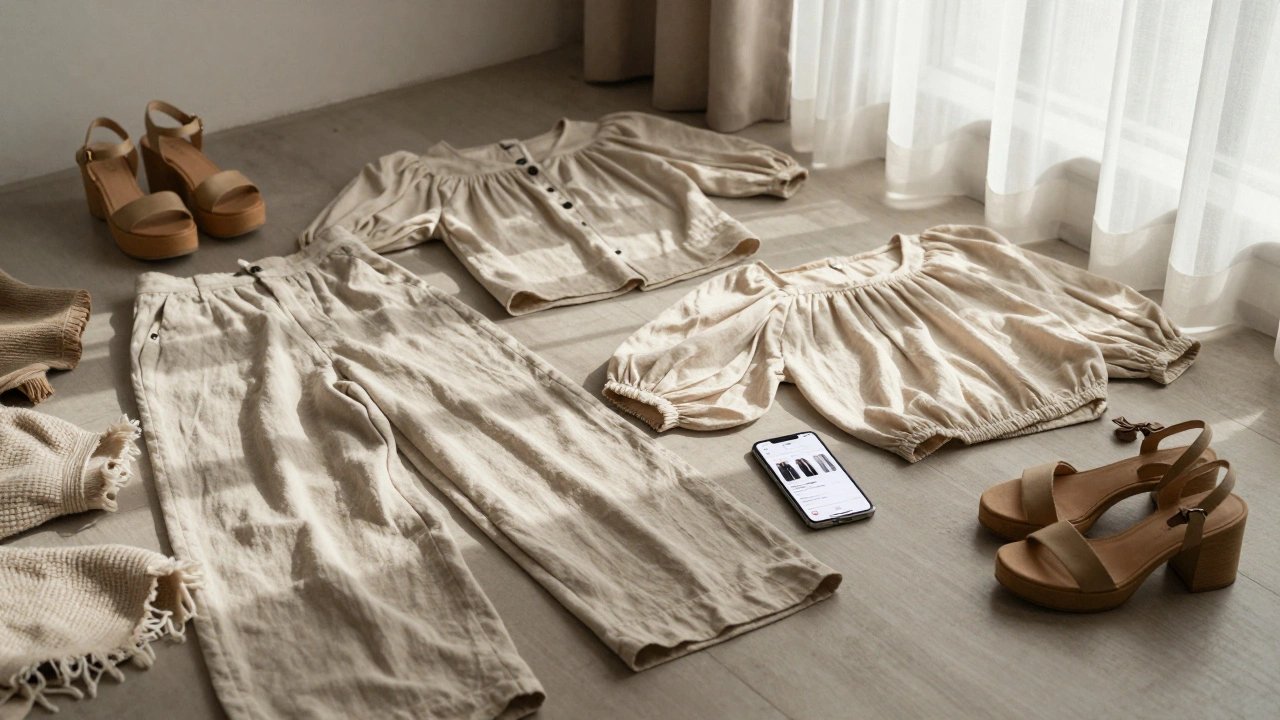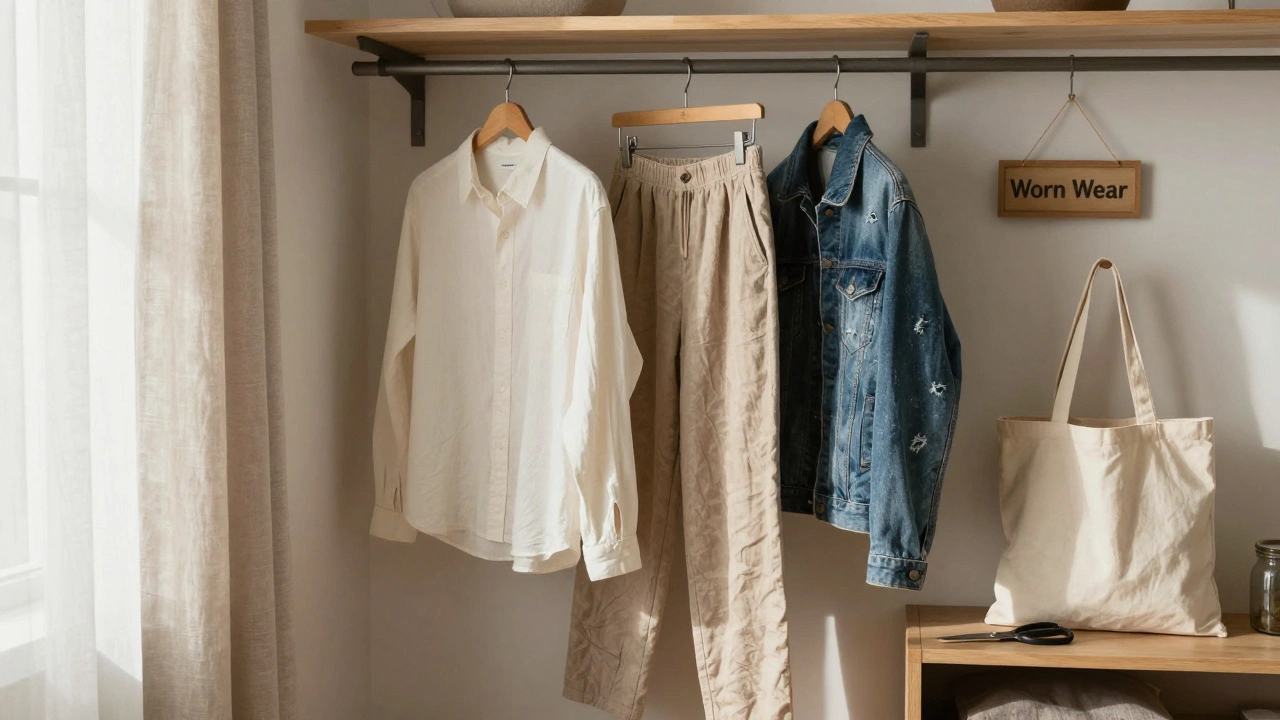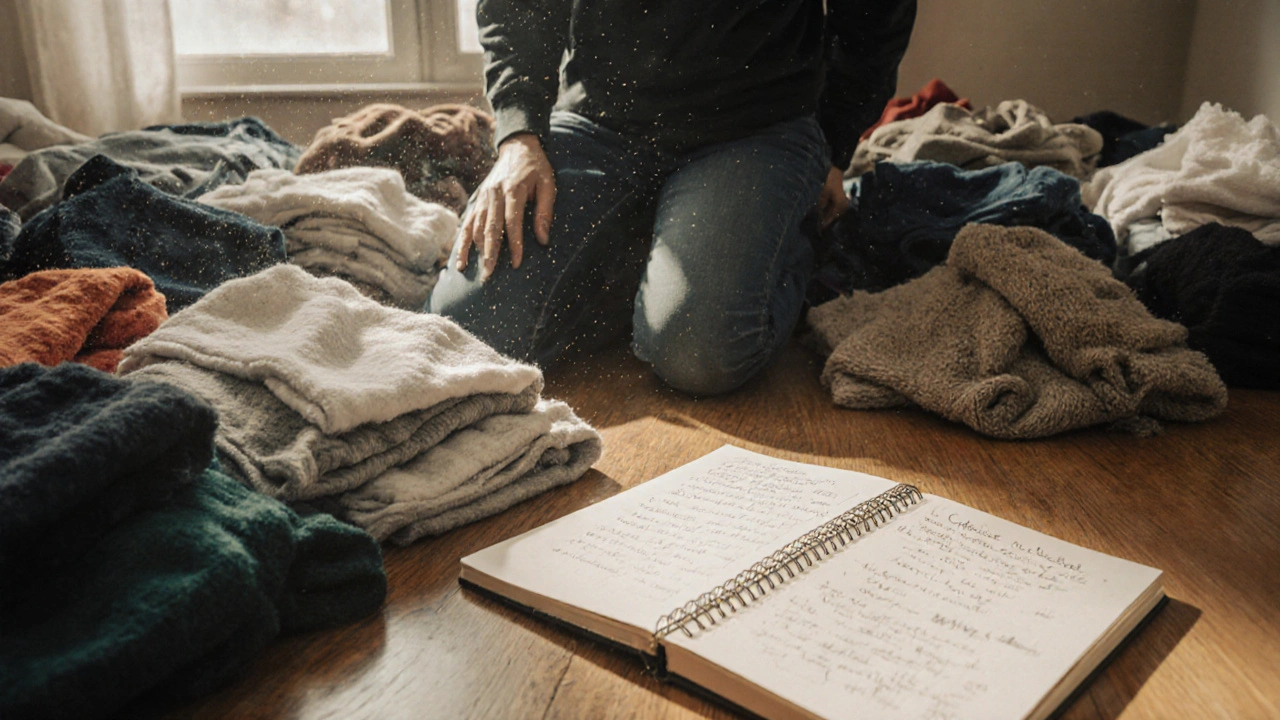Sustainable Fashion: Real Choices That Matter
Tired of fast fashion piling up in your closet and hearing brands toss around the word “sustainable” without really saying what it means? You’re not alone. Figuring out if a piece of clothing is truly eco-friendly can be tricky, but it’s not impossible—and it’s worth it. When you spot a shirt made from organic cotton or a dress with a Fairtrade label, you’re looking at options that often have less impact on the planet and a better story behind them.
So where do you even start if you want a wardrobe that lines up with your values? First, check the label. Look for familiar fabric names like organic cotton, bamboo, or hemp—these are usually more sustainable than synthetic fibers like polyester or nylon. Brands that proudly display certifications (think GOTS, Fairtrade, or OEKO-TEX) usually commit to strict environmental and ethical standards. It’s not about memorizing every label, but just clocking the fabric source and any official badges.
Still not sure? A quick online search of a brand’s sustainability page or impact report can be eye-opening. If they’re vague about what makes their clothes "green," it’s probably more marketing than real action. On the other hand, brands that talk straight about their manufacturing process, materials, and how they treat workers are more likely to actually walk the walk.
The future of fashion is definitely trending greener, but it’s not there yet. More brands are experimenting with recycled materials and smarter dyeing methods. Some even upcycle old clothes into new styles, cutting down on waste. Not every eco-friendly option needs to look like it came from a science fair either. Sustainable fashion is showing up as everything from classic jeans to statement pieces you’d wear on a night out.
But what about cost? More sustainable brands can be pricey upfront. That’s because fair labor and better materials don’t come free. But if your clothes last longer—thanks to better fabrics and timeless designs—you actually buy less, and it all balances out. Next time you shop, ask yourself: Will I want to wear this in two years? Does it feel sturdy? If yes, it’s likely a more sustainable pick.
We’re at a place where small choices genuinely add up. Every time you skip a throwaway tee and go for something built to last, you cut waste, use less water, and support better jobs. Join the movement—ditch the guilt and start making swaps that fit your style and values. Sustainable fashion isn’t about perfection. It’s about making better choices, one outfit at a time.
Vintage Shopping as Sustainability: How Buying Pre-Owned Clothing Reduces Fashion Waste
Posted by Eamon Lockridge on Dec, 26 2025

Vintage shopping reduces fashion waste by giving clothes a second life. Learn how buying pre-owned clothing cuts water use, emissions, and landfill waste-without sacrificing style or quality.
Buy-Back Programs: How to Trade in Clothes for Store Credit and Save Money on Fashion
Posted by Anna Fenton on Dec, 17 2025

Learn how buy-back programs let you trade in gently used clothes for store credit, save money on new fashion, and reduce waste. Discover which brands offer the best deals and how to maximize your credit in 2025.
How to Retire Fashion Trends Gracefully Without Waste
Posted by Lauren DeCorte on Dec, 6 2025

Learn how to retire fashion trends without waste by auditing your wardrobe, repurposing clothes, and building a personal style that lasts. No guilt. No fast fashion. Just thoughtful, intentional style.
How to Build a Wardrobe That Matches Your Environmental and Social Values
Posted by Eamon Lockridge on Dec, 4 2025

Learn how to build a wardrobe that reflects your environmental and social values-without sacrificing style. Discover practical steps to choose ethical clothing, avoid greenwashing, and make every purchase count.
Circular Marketplaces: Reselling and Buy-Back Programs That Close the Loop
Posted by Lauren DeCorte on Nov, 30 2025

Circular marketplaces are transforming fashion by turning used clothing into valuable assets. Learn how resale platforms and brand buy-back programs reduce waste, save resources, and build a more sustainable wardrobe.
Wardrobe Carbon Audit: How to Calculate and Reduce Your Closet’s Environmental Footprint
Posted by Anna Fenton on Nov, 16 2025

Learn how to calculate your wardrobe's hidden carbon footprint and reduce it with simple, practical steps-no new clothes needed. Discover which items hurt the planet most and how to fix your habits for real impact.
The Hidden Environmental Cost of Fast Fashion: Water, Chemicals, and Textile Waste
Posted by Kayla Susana on Nov, 8 2025

Fast fashion drains water, poisons rivers, and creates mountains of waste. Learn how your clothes impact the planet-and what real action looks like.
How to know if clothes are sustainable?
Posted by Anna Fenton on Feb, 13 2023

Sustainable fashion is becoming increasingly popular in the fashion industry. Knowing what is considered sustainable clothing is important to make sure that the clothes you buy are not only good for the environment, but also for you. This article provides tips on how to identify if a garment is sustainable. Firstly, consider the fabric that is used in the garment. Look for natural or recycled fabrics and avoid synthetic materials. Secondly, look for certifications that show the product is sustainable, such as organic or Fairtrade labels. Thirdly, research the company or brand and find out about their production process to make sure it is ethical and environmentally friendly. Lastly, look for clothes that are designed to last and can be worn for a long time. By following these tips, you can ensure that the clothes you buy are sustainable.
What exactly is sustainable fashion? Why is it so important?
Posted by Anna Fenton on Feb, 13 2023

Sustainable fashion is a term used to describe the production of clothes and other apparel in an environmentally-friendly and ethical manner. The concept of sustainability aims to reduce the negative impact of the fashion industry on the environment and to improve the working conditions of people involved in production. It is important because it helps to reduce pollution, conserve resources, and create a more ethical and humane clothing industry. Sustainable fashion also helps to reduce the costs associated with fashion production. It is important to make sure that the fashion industry is sustainable in order to ensure the protection of the environment and the welfare of people working in the industry.
Is sustainable fashion growing sustainably?
Posted by Anna Fenton on Feb, 13 2023

This article discusses the growth of sustainable fashion and its effectiveness in tackling the environmental crisis. It looks at the industry's efforts to reduce waste and its use of sustainable materials like organic cotton, as well as its commitment to ethical labor practices. It also examines the challenges facing the industry, such as the need for better education and awareness in order to spread the message of sustainability. Finally, it looks at the potential for sustainable fashion to become a powerful force for positive change. Ultimately, the article concludes that sustainable fashion is growing, but still has a long way to go to reach its full potential.
